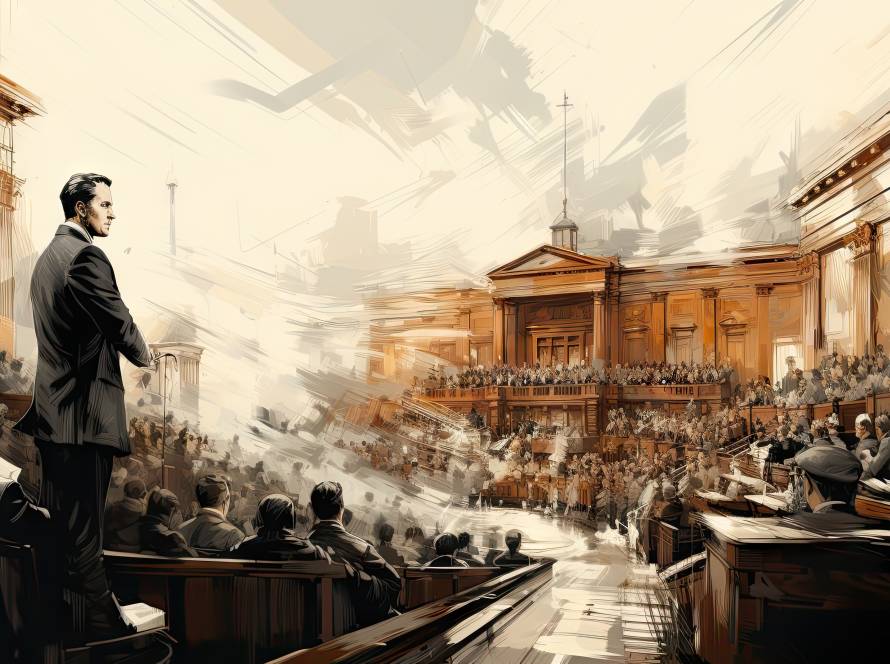John D. Hushon’s “The Tax Collector’s Good News” is not just a historical fiction novel; it’s a rich tapestry of character-driven stories that reflect the complexities of human experience in the first century. In this blog, we explore the main characters of the novel, their backgrounds, motivations, and the key moments that define their journeys.
Matti ben Mattiyahu
Background and Motivations
Matti, the fictional son of the apostle Matthew, is the central character in the novel. Raised in a devout Jewish household, Matti is deeply influenced by his father’s teachings and the socio-political turmoil of his time. His journey is marked by a quest for faith, identity, and purpose against the backdrop of Roman-occupied Palestine.
Development and Key Moments
Matti’s development is driven by his encounters with various historical events and personal challenges. His journey to Jerusalem and subsequent experiences, including the destruction of the Second Temple, profoundly shape his character.
In Chapter Nine, Matti’s first day in Jerusalem is a pivotal moment:
“Matti’s arrival in Jerusalem was filled with awe and reverence. The towering walls of the city, the bustling markets, and the solemnity of the Temple Mount left an indelible mark on his soul.”
This passage highlights Matti’s initial wonder and the spiritual significance of Jerusalem, setting the stage for his transformative experiences.
In Chapter Thirty-Five, Matti’s growth is evident as he takes on a leadership role:
“Work on writing the Gospel continued. Matti found himself at the center of the efforts, his faith and determination inspiring those around him. The process was challenging, but Matti’s resilience never wavered.”
This snippet shows Matti’s evolution from a curious young man to a determined leader, committed to spreading the Good News.
Micah ben Jude
Background and Motivations
Micah, Matti’s cousin and close companion, comes from a wealthy trading family. His motivations are shaped by his desire to balance his family’s commercial interests with his personal faith and ethical beliefs.
Development and Key Moments
Micah’s journey is intertwined with Matti’s, yet distinct in its focus on navigating the complexities of trade and loyalty in a turbulent period.
In Chapter Thirteen, Micah’s family plans are revealed, showcasing his dual responsibilities:
“Micah’s role in the family’s trading business was crucial. His strategic mind and keen sense of diplomacy often brought success to their ventures. Yet, his heart remained with the teachings of the Followers.”
This passage illustrates Micah’s internal conflict and the duality of his life as a trader and a believer.
In Chapter Twenty-Four, Micah faces a significant personal decision:
“Choosing a community of faith was not easy for Micah. The various sects and interpretations of the teachings challenged his beliefs, but he remained steadfast in his quest for truth.”
This moment underscores Micah’s dedication to his faith and his willingness to question and seek deeper understanding.
Other Principal Figures
Blessed Euodius
Blessed Euodius, an early bishop in Antioch, serves as a spiritual guide and mentor to Matti and Micah. His wisdom and experience provide a stabilizing influence amidst the chaos of the times.
In Chapter Twenty, Euodius’s interactions with local religious leaders highlight his role:
“Euodius met with the religious leaders of Antioch, discussing the challenges facing their community. His calm demeanor and insightful counsel earned him respect and admiration.”
This scene demonstrates Euodius’s leadership and the impact of his guidance on the broader community.
Jonathan ben Jude
Jonathan, Micah’s older brother, is a key figure in managing the family’s trading business. His practical approach often contrasts with Micah’s more idealistic views, creating a dynamic interplay between the two.
In Chapter Ten, Jonathan’s assessment of the political situation reveals his pragmatic nature:
“Jonathan’s keen understanding of the current political landscape was evident. He cautioned against taking unnecessary risks, emphasizing the importance of maintaining stability for their family’s interests.”
Jonathan’s practicality provides a counterbalance to the more spiritually driven characters, adding depth to the narrative.
Key Relationships
Matti and Rachel
Matti’s relationship with his wife, Rachel, is a cornerstone of his personal journey. Rachel’s support and understanding play a crucial role in Matti’s development, offering him a source of strength and comfort.
In Chapter Four, their bond is beautifully depicted:
“Rachel’s presence was a calming influence on Matti. Her quiet strength and unwavering faith provided a refuge amidst the storm of external events.”
This relationship highlights the importance of personal connections and the role of family in navigating life’s challenges.
Conclusion
The characters in “The Tax Collector’s Good News” are richly drawn and deeply human, each with their own motivations, struggles, and growth. Through their journeys, John D. Hushon explores themes of faith, resilience, and identity in a historical context. The interplay of personal and historical narratives creates a compelling and immersive reading experience.
Dive into the lives of Matti, Micah, and other compelling characters in “The Tax Collector’s Good News” to discover a story where history and humanity converge, revealing the enduring quest for meaning and truth.

